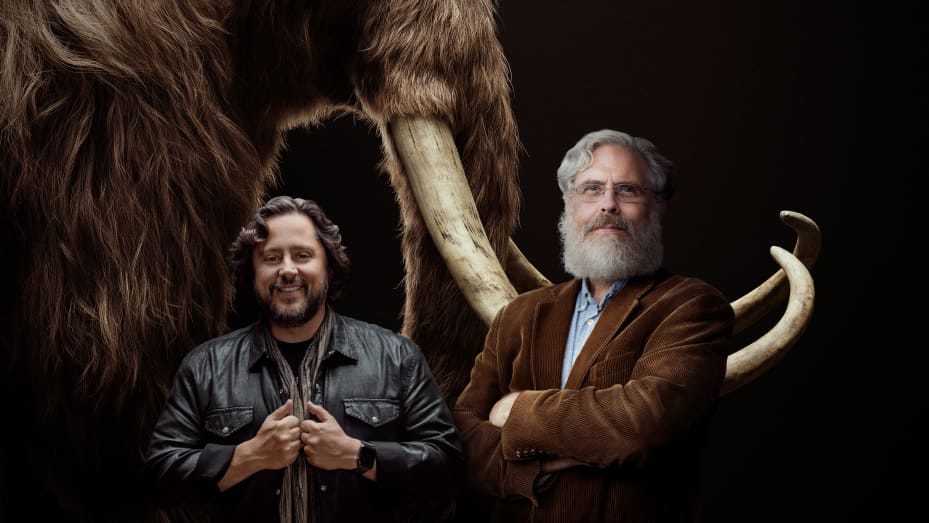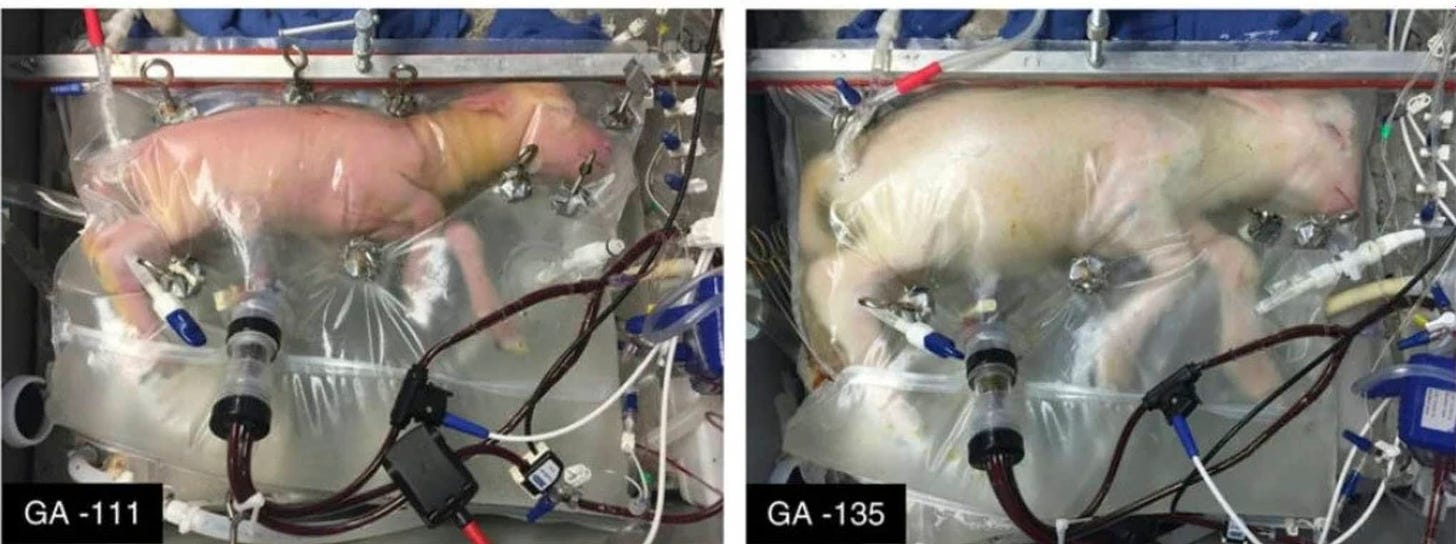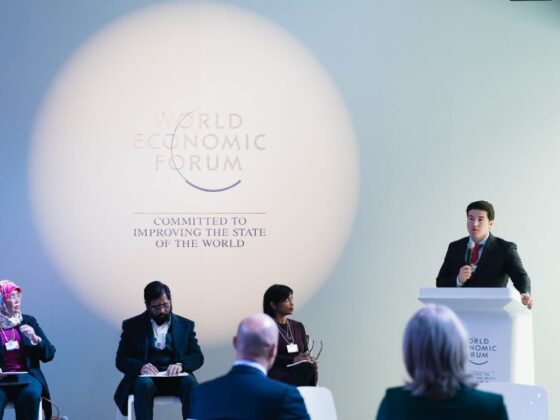“If we cut up beasts simply because they cannot prevent us…, it is only logical to cut up imbeciles, criminals, enemies, or capitalists for the same reasons.” C.S. Lewis, God in the Dock
It was in 1975 that 140 genetic researchers gathered at Asilomar Conference Grounds, on beautiful Monterey Peninsula in California, to discuss the implications of being able to decrypt and reorder genes. It’s called “recombinant DNA,” or, DNA that has been formed artificially by combining constituents from different organisms, allowing scientists to manipulate DNA fragments in order to study them in the lab. Basically, it means altering the source code of life.
As Wired magazine put it in 2015, recalling that 1975 meeting:
It was a God-like power—to plug genes from one living thing into another. Used wisely, it had the potential to save millions of lives.
The big question was, what if it wasn’t used wisely? The scientists agreed that “cloning or otherwise messing with dangerous pathogens should be off-limits.” In the end, the rules the Asilomar scientists hoped biology would follow “didn’t look much further ahead than ideas and proposals already on their desks.” Never could they have guessed how quickly science would progress or how complex the moral dilemmas would become–or how little would be done about it. By 2015, the techniques scientists had theoretically discussed all those years ago had become reality with the gene-editing technique called Crispr-Cas9.
Crispr is an acronym for “clustered regularly interspaced short palindromic repeats,” a description of the genetic basis of the method; Cas9 is the name of a protein that makes it work. Crispr-Cas9 makes it easy, cheap, and fast to move genes around—any genes, in any living thing, from bacteria to people. “These are monumental moments in the history of biomedical research,” David Baltimore, American biologist and 1975 Nobel laureate in Physiology or Medicine said in the 2015 Wired article.
What little the general public knows of CRISPR is confined to the good it can do for humanity. For example, it can potentially treat multiple illnesses, such as myeloma, sickle cell anemia, Huntington’s disease, HIV, to name a few. I say potential because so far, not much of that good has materialized.
On the more bizarre side, the gene-editing tool has been used to create malaria-blocking mosquitoes, muscular beagles, and miniature pet pigs.
On the morally troublesome side, we have the creation of designer babies, invasive mutants, species-specific bioweapons—possibilities that once existed only in the realm of science fiction and nightmares.
What are the rules? Conveniently, there still really aren’t any. The goalposts keep changing as the experiments rush onward. It’s the money and the power that always seems to overcome moral hesitancy.
Jennifer Doudna and Emmanuel Charpentier published the first paper detailing how to use the enzyme to cut DNA. Along with UC Berkely, they filed for a patent for using it to edit the DNA of cells with nuclei – like those of plants, animals, and people. At the same time, Feng Zhang of the Broad Institute filed a separate patent.
For years, the two powerful institutions waged a war in court over who was the first to apply the gene-editing tool CRISPR, and, therefore, who owned the patent. In March of 2022, it was announced that Berkely lost that battle to Broad.
Doudna, originally an Editas founder, licensed her patent to a company called Intellia, funded by Bill Gates. Charpentier licensed to CRISPR Therapeutics, also funded by Bill Gates. Zhang’s patent is licensed to Editas. A 2015 Forbes article announced that Bill Gates and 13 Other Investors Poured $120 Million into Editas Medicine.
One thing we can say about Bill Gates is he likes covering all his bases.
Editas is focused on using viruses or other methods to deliver the CRISPR-Cas9 protein into the cells of sick patients and edit the very DNA that is making them ill.
In a 2021 interview with The Verge, Doudna told of her greatest fears:
One of the big unknowns is if we were to deploy this technology to make a permanent change in the germline of an embryo, would there be unintended consequences of that change that might not really show up for dozens of years? How do you even think about testing such a thing?
In 1975, cloning was determined to be off limits. That is no longer the case. Despite the fact that scientists themselves admit they still do not really understand what they are doing, nor do they have any idea of what the long-term consequences will be, we are being told that the end justifies the means, and we should give up our individual rights for the health and safety of all.
In Doudna’s own words, “at some point you will have to try it on a person.” Doudna assures us that “it has to be done with an open-eyed approach to the potential risks of deploying these organisms and ensuring that appropriate guidelines and regulatory procedures are followed to try to avoid any unintended environmental consequences.”
What proof do we have that “appropriate guidelines and regulatory procedures are being followed?” Absolutely none. Rather we are drowning in the deceit and avarice of those funding and conducting these experiments.
At the same time that one group of scientists claim they want to eradicate diseases like Zika, and dengue, other groups are involved in “de-extinction,” the idea that you can bring back an extinct organism like a wooly mammoth. How fun for them. Just imagine the accolades a scientist could get for breathing life into an extinct wooly mammoth. What about mistakenly bringing a dangerous pathogen along with it? There are so many disastrous possibilities. Didn’t any of them watch Jurassic Park or Resident Evil or a hundred other sci fi and horror movies? How about The Fly? I always liked that movie.
In 2019, the pharmaceutical company GlaxoSmithKline (GSK), again, funded by Bill Gates, announced a five-year collaboration with UC Berkeley and UCSF to establish the Laboratory for Genomics Research (LGR), the brainchild of Jennifer Doudna, to “advance genomic research and improve drug discovery.”
You can’t find a more corrupt company than GSK, well, maybe you can, since there are so many of them. Numerous lawsuits have been filed against GSK and here are just a few.
- Zantac lawsuits claim the drug caused plaintiffs to develop bladder cancer. In studies, NDMA (N-Nitrosodimethylamine), found in Zantac, was also linked to cancers of the breast, colon, esophagus, kidney, liver, skin, ovaries, prostate and stomach.
- GSK failed to report safety data to the FDA about its diabetes drug Avandia.
- In 2012, GSK admitted to illegally promoting Paxil and Wellbutrin by misrepresenting data and bribing doctors to favor their drugs for treatment of depression in children—uses it was never approved for. The company reached a civil settlement of $3 billion, the largest health care fraud fine at that time.
- GSK was found guilty of paying kickbacks to doctors.”The sales force bribed physicians to prescribe GSK products using every imaginable form of high-priced entertainment, from Hawaiian vacations [and] paying doctors millions of dollars to go on speaking tours, to tickets to Madonna concerts,” said US attorney Carmin Ortiz.
But never mind! Incredibly, just as we gave Pfizer and Moderna the authority to inject us with experimental gene therapies, we are moving on to even greater bodily invasions, like allowing GSK to snip and clip and alter our DNA, and therefore own it.
Ever so insidiously, our brains have been infiltrated with information to make this all seem nonthreatening. Like genetically altering pigs to make them tiny. Surely lots of people want cute little pigs as pets, with the assurance that they will actually stay that way. The fad of owning “teacup” pigs quickly ended when it was found that the cute critters grow into full-sized potbellied pigs. Owners were further horrified to learn that they had been “feeding them only a fraction of what a growing pig needs to consume to be healthy and strong.” Answer? Mutate big pigs into little ones—it’s so much more humane, and you actually get what you paid for.
BGI, or Beijing Genomic Industries, a Chinese company in Shenzhen that is famous for a series of high-profile breakthroughs in genomic sequencing, originally created the gene-edited micropigs as models for human disease. Now they can sell the pigs and make a profit. If they can do it with pigs, they can do it with other animals, too. The animals can be offered with different coat colors and patterns. Will they one day sell humans in this manner? I mean, children are being encouraged to think they are animals. If you think you are a cat, they will put a litterbox in the school bathroom for you. Think about it.
“It’s questionable whether we should impact the life, health and well-being of other animal species on this planet light-heartedly,” says geneticist Jens Boch at the Martin Luther University of Halle-Wittenberg in Germany.
But why would we take Boch’s concerns seriously since he helped to develop the gene-editing technique used on the pigs.
Yes, yes, we know we need to come up with guidelines, scientists lament. All the while, carrying on their merry way, knowing it’s only a hop, skip and a jump to modifying humans in this manner.
BGI was originally formed in 1999 under the name The China National GeneBank (CNBG) as a genetics research center to participate in the Human Genome Project. The collaborations between the United States and China run deep and are intricately entwined.
BGI is a testimony to the grand schemes of transhumanists. It has a museum celebrating the power of DNA. Within a vast hall is a statue of an extinct mammoth. Eben Kirksey describes it in his fascinating book, The Mutant Project: Inside the Global Race to Genetically Modify Humans, published in 2020:
“Emblazoned on its side was an English phrase: ‘Preserve our future.’ But the glowing white Chinese characters on the mammoth had a bolder message for Chinese visitors. The first two characters meant ‘eternity’ or ‘lasting forever,’ while the second phrase spelled out ‘immortality.’ Taken together, the message on the mammoth proclaimed:
‘Live forever and never die out.’”
Kirksey tells us that at an international conference at BGI in 2017, Chairman Henry Yang made a promise that “Within ten years we aim to sequence the DNA of every important plant species, within twenty years we want to sequence every human on the planet, within thirty years we aim to sequence every form of life.”

The keynote address was given by a legendary molecular biologist from Harvard, George Church, whose Institute for Regenisis planned to reanimate extinct species, like the wooly mammoths. Church praised genomic engineering as enabling new capabilities to create resistance to pathogens. Church said he demonstrated how to alter human gene sequences and block entry of viruses into cells. This was four years ago. Looking at these claims now, after mRNA genetic therapy has been injected into millions of people, it takes on a whole new meaning.
Church started a company called The Personal Genome Project, initiated in 2005. The website describes it as “a vision and coalition of projects across the world dedicated to creating public genome, health, and trait data. The PGP approach is to invite willing participants to publicly share their personal data for the greater good.”
Yes, THE GREATER GOOD.
Cut to the present and George Church has secured funding to create his wooly mammoth in as little as six years.
“Our goal is in the successful de-extinction of inter-breedable herds of mammoths that we can leverage in the rewilding of the Arctic. And then we want to leverage those technologies for what we’re calling thoughtful, disruptive conservation,” Lamm, Church’s partner, told CNBC.
If you had any reservations, don’t worry. It’s for the greater good. Rewilding the Arctic with woolly mammoths could slow global warming by slowing the melting of the permafrost, where methane is currently trapped.
Don’t you just love words like “disruptive conservation” and “rewilding.” Incorporate these words into your vocabulary and it will prove how much you care about the environment and how knowledgeable you are about all the latest trends.
One of the investors is a guy named Richard Garriott, president of The Explorers Club and a video game entrepreneur who spent $30 million to go to space as a tourist. Garriott is excited about synthetic biology, the science of redesigning organisms for specific purposes. If you have enough money, I guess you can do anything. Meanwhile, ordinary citizens will freeze this winter—at least until everything becomes synthetic, including them.
“Beyond the amazement of ‘de-extinction’ becoming real, proving the technology with de-extinction is only the beginning. These same technologies will be able to solve a huge array of human problems,” Garriott told CNBC. “Synthetic biology will allow us to create new life forms that can address massive problems, from oil and plastic cleanup to carbon sequestration and much more. Solving tissue rejection and artificial wombs will go on to help improve and extend life for all humans.”
Sorry, but no. The reason we have all these problems is because we keep tinkering with the perfect balance of God’s creation. The NIH’s National Human Genome Research Institute website promises that “synthetic biology will ‘redesign’ organisms so that they produce a substance, such as a medicine or fuel, or gain a new ability, such as sensing something in the environment, are common goals of synthetic biology projects.”

What that actually means behind the razzle-dazzle is that nature is being manipulated into something synthetic so that it can be owned. Anything occurring naturally in nature cannot be patented. It isn’t about making the world a better place. It’s about a few powerful people owning everything and everyone on the planet.
Church can gush all he wants about the greater good. But when you get down to the nitty gritty, the guy has more than 100 patents in his name. He wants those patents to pay off.
It was back in 2013 when a ruling by Judge Clarence Thomas changed our world, propelling forward this manic race to alter DNA so that it could be patented and owned.
A UTAH-based firm had argued that it “owned” two genes linked to breast cancer, for which it held patents. The court disagreed, determining that because the DNA came from nature it was ineligible for patenting. The US biotechnology industry had to find a way around this ruling that threatened the huge sums invested into research and therapies and the billions of profits to be gained from it.
And so it happened that Justice Clarence Thomas further ruled that, although “We hold that a naturally occurring DNA segment is a product of nature and not patent eligible merely because it has been isolated, synthetic molecules known as complementary DNA can be patented “because it is not naturally occurring“.
This opened the floodgates for the mass collection of data and the thrust toward mRNA genetic therapy, as we have seen in the COVID-19 “vaccines”.
Modify big, fat pigs into “teacups” for the benign reason of selling them as pets? Not really.
Let’s go back to Church and BGI. The scientist and the company entered into a partnership to “humanize” pigs, meaning to genetically engineer them to be more like us on a molecular level. Organs could then be harvested from these pigs and implanted into people, he said, thereby extending human life. It was all so perfect since BGI had already established a factory farm.
The BBC reported that the farm produces an astounding 500 pig clones annually in a process called “handmade cloning.”
“We can do cloning on a very large scale,” Dr. Yutao Du, the scientist in charge, says in the report. “Thirty to 50 people together doing cloning so that we can make a cloning factory here.” Genetically modified piglets are tested on for new medicines. Genetically, pigs are very similar to humans, making them a reasonably accurate model for testing human medications.
What was once a shoe factory is now not only the world’s biggest and possibly first “cloning factory,” but also the world’s largest center for gene sequencing, with machines running 24 hours a day analyzing gene sequences. BGI has plans to sequence the genomes of a million people, a million animals, and a million plants, which is an ambitious task considering other genome projects, like one in the UK, aim to sequence 10,000 humans.

Here is a description, written by David Shukman, of the operations being performed on the pigs at BGI. In place of the word “sow” put “woman.” In place of the word “trotters” put “feet” and “hands” and so on. Then imagine a future where human beings are operated on in this manner for the sake of the demigods who live above us.
A room next to the pens serves as a surgery and a sow (woman) is under anesthetic, lying on her back on an operating table. An oxygen mask is fitted over her snout (mouth) and she’s breathing steadily. Blue plastic bags cover her trotters (feet and hands).
Two technicians have inserted a fiber-optic probe to locate the sow’s (woman’s) uterus. A third retrieves a small test-tube from a fridge: these are the blastocysts, early-stage embryos prepared in a lab. In a moment, they will be implanted.
The room is not air-conditioned; nor is it particularly clean. Flies buzz around the sows (woman’s) head.
My first thought is that the operation is being conducted with an air of total routine. Even the presence of a foreign television crew seems to make little difference. The sow (woman) is comfortable but there’s no sensitivity about how we might react, let alone what animal (human) rights campaigners might make of it all.
I check the figures: the team can do two implantations a day. The success rate is about 70-80%.
As an excellent article in Natural Society puts it:
Techno-eugenics, you might call it – a way to appropriate humanity for the use of an elite class.
With the human race slowly being killed off by GMO food, environmental poisons, petroleum, plastics, pharmaceuticals, vaccinations, radiation, and weaponized warfare, the powers that be are working on a new strain of stronger ‘humans’ to carry on our existence. Forget designer babies with specific gene preferences determined by parents, we’re talking about the utter transformation by a technocracy of the human genome. It is called transhumanism and scientists in the UK and US have already submitted proposals to legally create GMO babies.
If you want Big Pharma and Biotech companies to be able to own every square inch of you – right down to your DNA – then this is a great advance in technology and medicine. The babies you make will not be your own, and the DNA in your own body will be patented by some corporation that has the same rights as a person.
Actually, GMO human embryos have already been created.
All the way back in 2012, the first ‘GM babies’ were born into women who had trouble conceiving their own children. 30 of these genetically modified babies were ‘created’ in the United States. Scientists fingerprinted 2 of the one-year-old children, finding that they inherited DNA from 3 adults, meaning they will now be able to pass along these modified genes to their offspring.
This means that if these genetically modified babies grow up and mate with non-GM humans, they could potentially alter the very genetic coding of generations to come.
We must also consider the question of ownership. Who will own these children in the future. The ‘parent’ or the company that manufactures them. Will all children eventually be born in some sort of ‘artificial wombs?’
Private companies already own the DNA of millions of people, but no one ever thinks about it.
“Illumina is like the ruler of this whole universe and no one knows that,” said 23andMe’s CEO Anne Wojcicki
The three leading companies in genomic sequencing are Illumina, a company based in San Diego; Thermo Fisher, based in Boston; and BGI.
As previously mentioned, BGI grew out of the Human Genome Project. The Gates Foundation has funded BGI projects regarding genome sequencing in cooperation with the Chinese Communist Party (CCP).
BGI set up an office in Washington, U.S. in 2016, the home state of the Bill & Melinda Gates Foundation. The firm’s relations with Washington resulted in targeting the state with its COVID-19 test kits in order to mine the Americans’ data.
Bezos and Gates both invested in Thermo Fisher, which helped the Chinese government sequence the DNA of political prisoners.
When you start delving into these companies, despite the battles they wage over ownerships and patents, you see how integrated they are with each other across national lines. We have seen how Bill Gates alone invests in competing companies, just to ensure he always wins. While constant threats of nuclear and civil wars, pandemics, climate change, famine and natural disasters are bringing our world to the brink of destruction, these companies grow stronger, increasing their power over us all.
In 1975, scientists agonized over the question of whether or not the God-like power of being able to plug genes from one living thing into another would be used wisely and how to create rules to stop that from happening.
But greed and the desire to achieve God-like power intervened, as they always seem to do, and these questions ceased to matter. BGI is a company most of my readers had probably never heard of before this moment. But it’s important to have the bigger picture so we can see how it all fits into the grand scheme of things. Covid was just one cog in the wheel of this vast machine.
Scientists and the companies that employ them are moving full steam ahead with the goal of making techno-eugenics a common and accepted practice. Other than divine intervention, there will be nothing we can do to stop them. It will all be completely legal.














